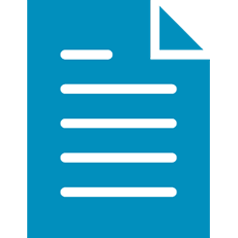Indonesia is gradually moving toward an aging society. The number of elderlies in Indonesia is reaching 25.6 million people or around 9.29% of the whole population (Susenas, 2019). The number is predicted to increase to around 20% in 2040 (BPS 2018 cited in MAHKOTA and TNP2K, n.d.) and will reach around 25% of population by 2050 (UN, 2017 cited in MAHKOTA and TNP2K, n.d.). It is imperative to assure the welfare of these elders, as they are becoming less productive and vulnerable to any risks and shocks. It is also crucial to provide this group, especially those who live under poverty, with sufficient social protection programs.
Social protection programs targeting the elders, especially poor elders, play a crucial role in assuring their welfare. The programs would allow them to meet their basic needs and, to some extent, relieve their family members’ burdens. TNP2K (2020) shows that around 11% of elderlies live under poverty and more than 60% of them live with family members who are likely to act as their caregivers.
The government, both at the national and sub-national levels, has already prepared social protection programs for the elderly. At the national level, the government started to include elderly components as part of the Family of Hope Program’s (Program Keluarga Harapan/PKH) beneficiary criteria in 2017. The Program reached around 2 million elders in 2019 (MAHKOTA and TNP2K, n.d.). At the sub-national level, several local governments, for example, Aceh and DKI Jakarta, have also prepared programs targeting the elders. The Provincial Government of DKI Jakarta issues the Jakarta Elderly Card (Kartu Lansia Jakarta/KLJ), which provides benefits up to IDR 600,000 monthly. The cards have benefited around 40,419 elders (MAHKOTA and TNP2K, n.d.).
Despite the availability of such programs, the number of elders who receive benefits, in general, remains relatively low. Approximately 12% of elders have access to social protection programs, which includes pension funds for civil servants and contribution-based social protection programs such as insurance (BPS, 2017 cited in TNP2K, 2020). Meanwhile, only 2% of elders receive noncontribution-based social protection programs or social assistance.
We are assigned to develop mixed-method methodology using both quantitative and qualitative instruments, and take a comprehensive approach to household/family/individual and community well-being, including impact on children, caregivers, etc.
Scope of work in developing the quantitative instruments:
- Develop sampling frames
- Develop household questionnaires that consist of, among others, the characteristics of households, household members, and elders
- Conduct secondary data analyses on elders’ characteristics and situation, as well as elders’ access to social protection programs
Scope of work in developing the qualitative instruments:
- Develop interview and FGD instruments for interviews/FGDs with households/individuals/elders as well as stakeholders
- Develop semi-structured questionnaires/instruments for case studies of households/families/elders
- Consult with stakeholders (program implementers, etc.) at the national and provincial levels to obtain information on existing social protection programs and the changes caused by the COVID-19 pandemic



